I’ve tried for years to grow tomatoes in my hot, dry Hawaii Kai garden and I actually was able to grow Atomic Grape tomatoes using seeds from fruit purchased from the store. But my most successful tomatoes have been Red Currants. There’s a plant flowering right now in my garden, but I can’t say that I’m actually “growing” it since it’s a gift from some fowl-weathered friend, which is why some local gardeners call them bird poop tomatoes.
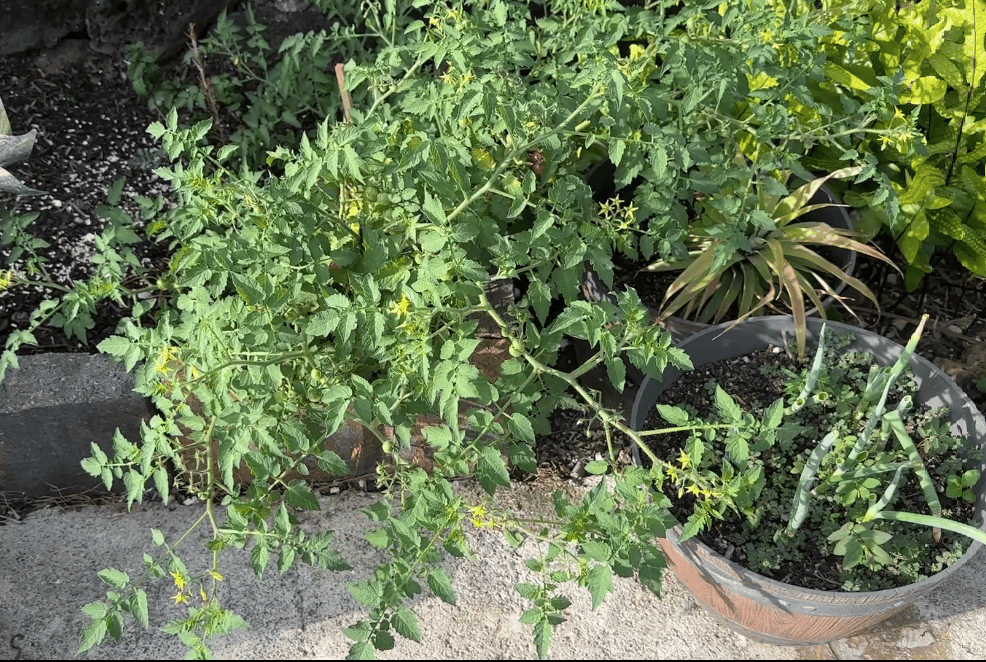
A Red Currant tomato currently in my garden is the happy result of a bird’s donation.
I recently learned their actual name, thanks to a three-hour presentation by Master Gardeners Amy Teves and Chanda Johnston that was packed with everything you need to know about “Growing Tomatoes in the Hawaiian Garden.” The presentation took place Sept. 3 at the Urban Garden Center in Pearl City, which is operated by the University of Hawaii’s College of Tropical Agriculture and Human Resources (CTAHR).
I always learn something new at every CTAHR workshop I attend, and the tomato class was no different. Below are some of my top takeaways from their presentation — there was so much other information provided that I highly recommend taking the workshop if they offer it again.
Best time to plant tomatoes in Hawaii
Unlike the mainland, where a short growing season is the biggest challenge, Hawaii’s year-round warmth means a constant battle with pests. One of the most important factors is planting at the right time — which is now (September) to May because of cooler temperatures and lower pest pressure.
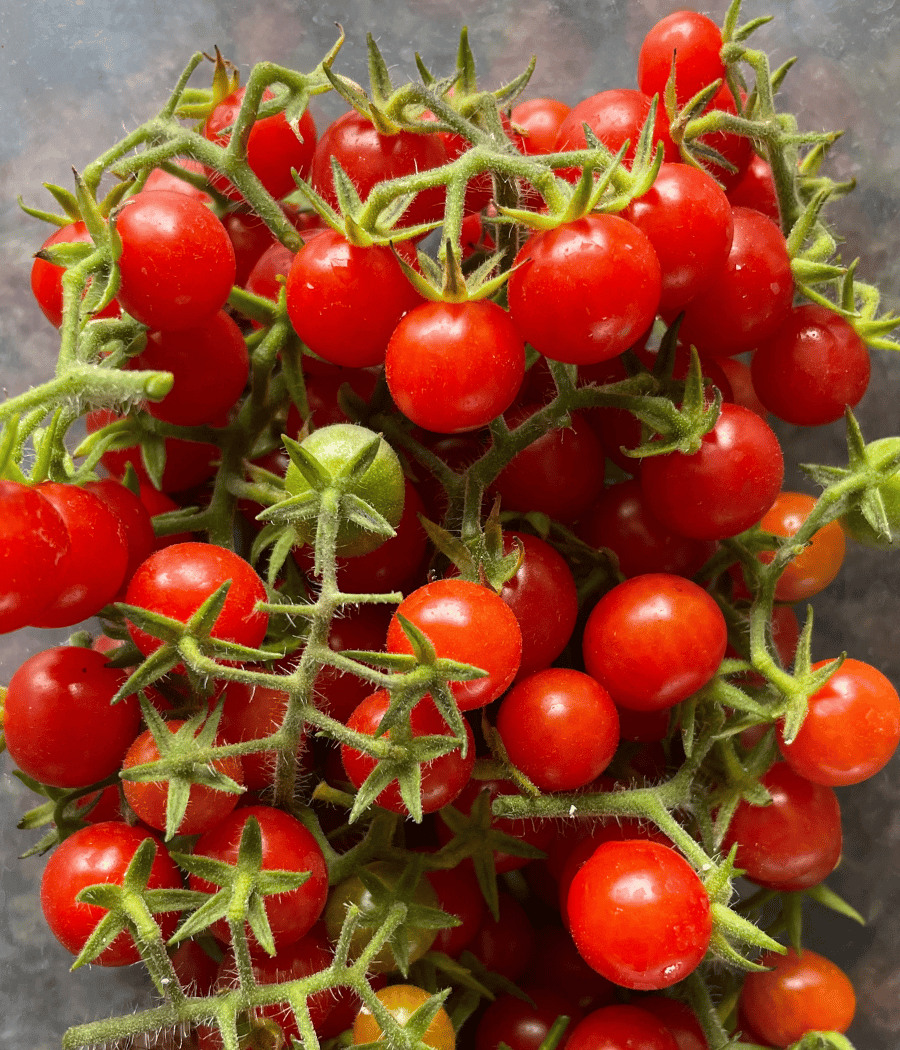
Red Currant tomatoes are about the size of marbles and are quite sweet.
Choose the right cultivars
Before you even put spade to ground, you’ll want to choose the right variety for Hawaii’s growing conditions. Select cultivars that are very resistant to fungal, bacterial and viral diseases — like the Red Currant — and you’ll have set up your garden for success.
I learned that there are two main types of tomatoes: Determinate tomatoes are bushier and more compact, making them perfect for smaller container gardening and limited spaces.
Indeterminate varieties are vining plants that grow larger and require more space and more support. You’ll want to prune the side shoots, known as “suckers,” of these varieties to improve air flow and reduce the possibility of fungal and bacterial infections.
If you’d like to try UH’s cultivars that have been bred and tested to grow well in Hawaii, you can order seeds online. UH’s seed availability form (as of July 24, 2025) lists these varieties as available: the N-63 (indeterminate, with green-shouldered fruits), Komohana (determinate, producing prolific grape tomatoes) and Haruki (a new determinate variety with strong, balanced flavor, according to Heritage Seed Market, which also warns that “stink bugs love it”).
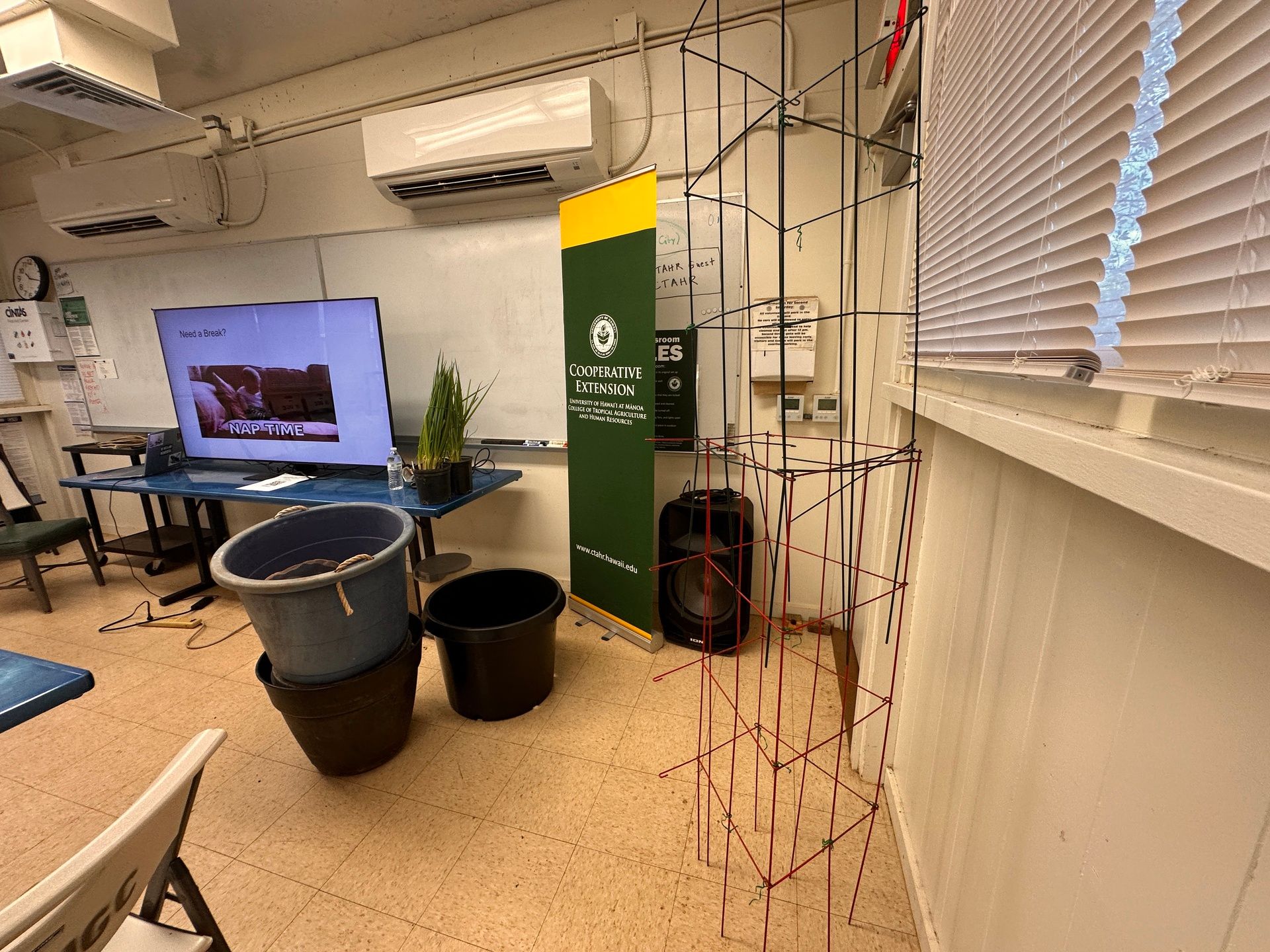
Trellis supports are needed for the larger indeterminate varieties of tomatoes.
Best pot size for tomato plants
Pot size is critical since tomatoes have large root systems. Amy recommended a minimum of a 15-gallon pot with straight sides for a single plant. The larger pot helps the soil retain moisture longer, which means less watering and lower utility rates. She advised drilling plenty of holes in the bottom — more holes are better than adding a layer of rocks..
Also, be sure to use potting mix for your container, and not garden soil. CTAHR and the Master Gardeners do not endorse any particular products, but in several workshops they have mentioned Sunshine Mix and Pro Mix as brands used in the center’s gardens and their own. Both those mixes have Mycorrhizae, which help deliver nutrients to plants.
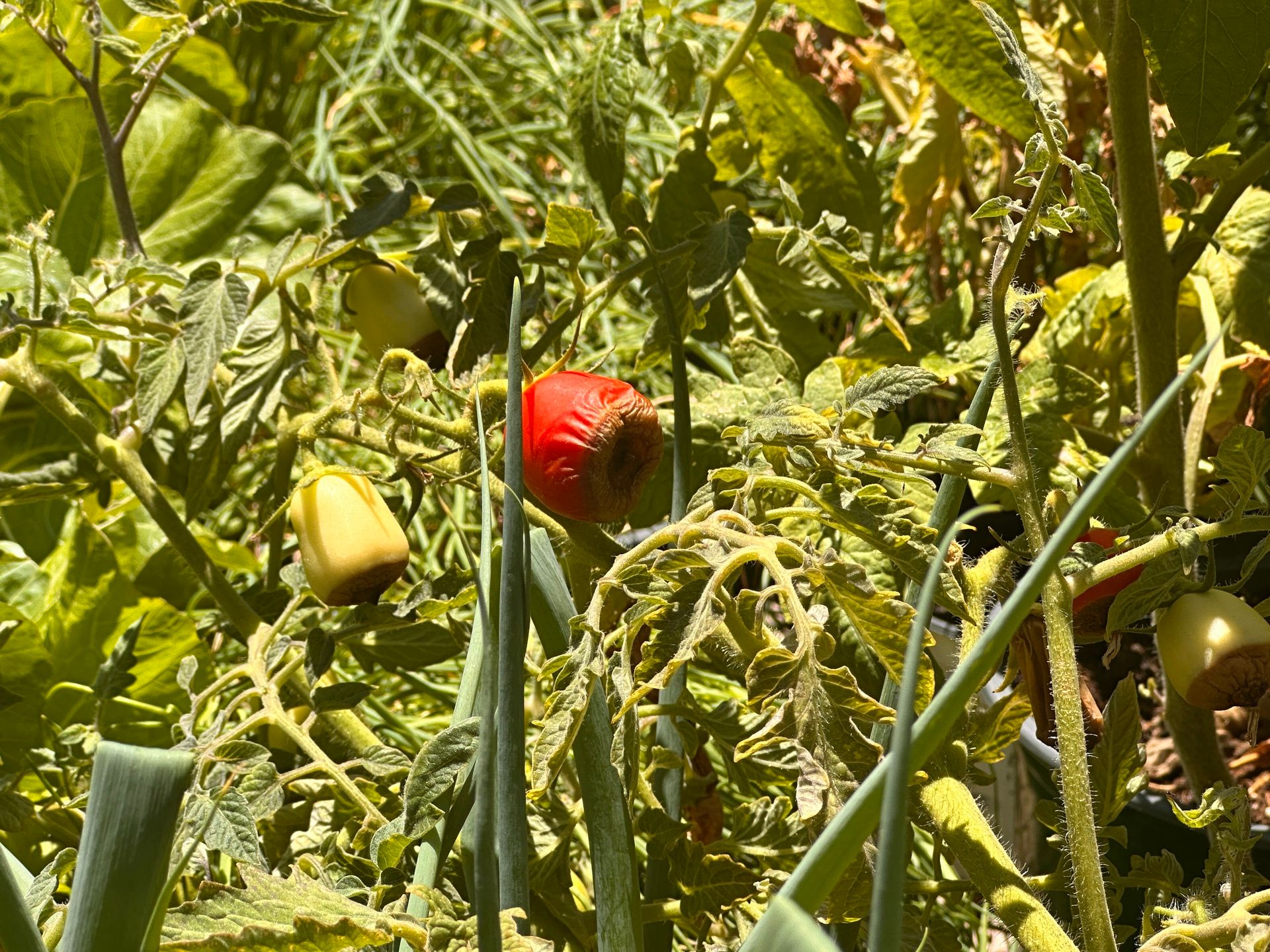
Overwatering can contribute to blossom end rot in tomatoes.
The art of watering and feeding
Overwatering is a common mistake that can lead to bland flavors and disease, as well as cracking of the fruit. The key is to water early in the morning and from the bottom whenever possible to prevent fungal issues on the leaves and stems. Cut down on the watering at the first blush on the fruits.
Tomatoes have different nutritional needs at different stages of their growth. In the beginning they need more nitrogen but once your plant begins to flower, it will benefit from fertilizers higher in phosphorus and potassium.
The battle against pests and disease
In Hawaii, you must be prepared for pests year-round. This is where Integrated Pest Management (IPM) comes in, focusing on natural solutions first.
Ants and Aphids: Try planting nasturtiums to deter aphids, and use ant baits year-round to keep ants out of your pots.
Whiteflies: These tiny pests can transmit tomato yellow leaf curl virus (TYLCV), which causes yellowing leaves and stunted growth. The best prevention is planting varieties resistant to TYLCV and removing any infected plants immediately.
Spider Mites: These tiny arachnids are not killed by normal insecticides. You'll need to use a miticide, and you should prune and trash affected leaves.
Spacing: To prevent the spread of disease and pests, give your plants plenty of space and don’t plant two similar plants right next to each other.
If a plant is continuously attracting a lot of pests, consider getting rid of it to protect the rest of the garden.
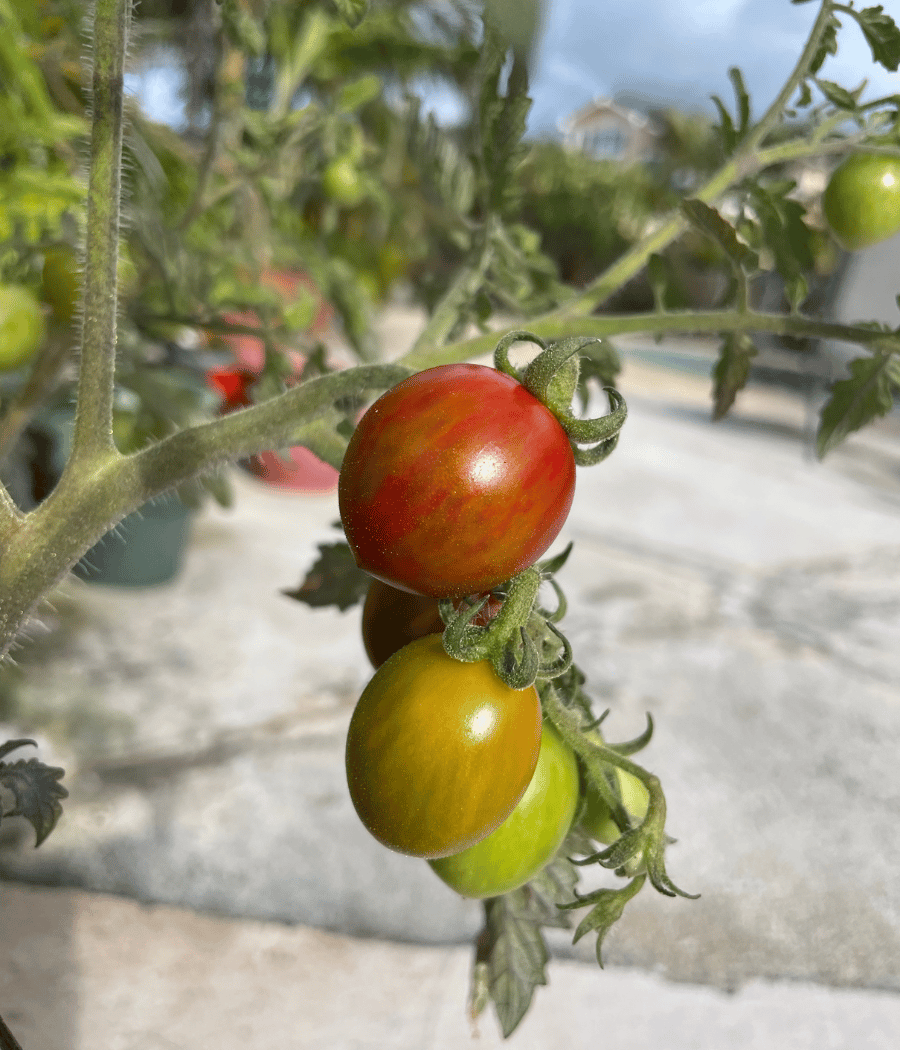
Atomic Grape tomatoes that I grew using seeds from fruit purchased at a store.
Final tips for your harvest
To protect your tomatoes from birds, use small mesh bags on the individual or groups of fruit, or a large tree bag over the entire plant.
Don't refrigerate tomatoes! Storing tomatoes in the fridge turns them mealy and mushy. Keep them on the counter, stem side down, in a cool spot instead.
Got a tip for growing tomatoes?